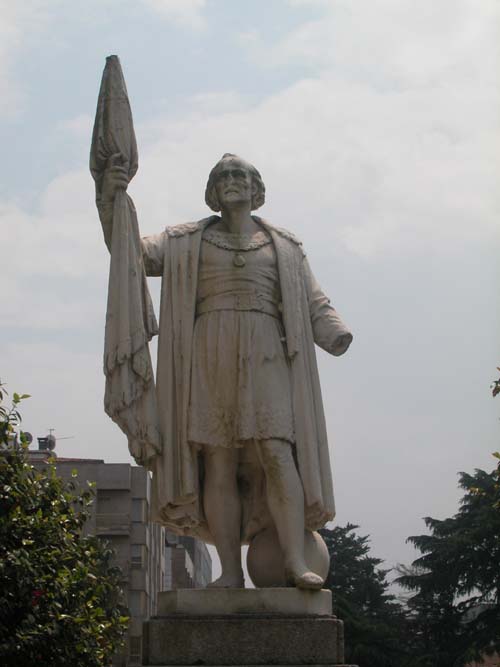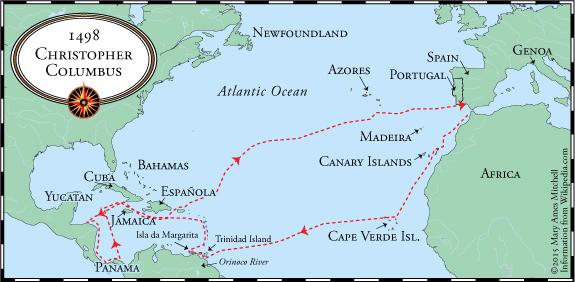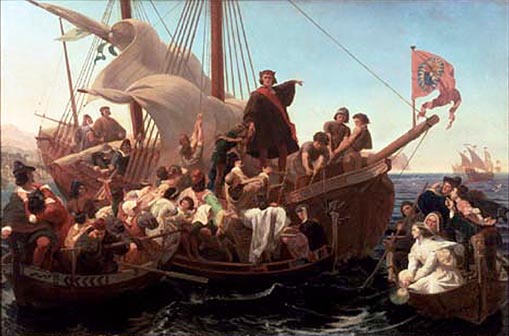Where did Christopher Columbus go on his Third Voyage
Contents
Here is information on the third voyage of Christopher Columbus
On May 30, 1498, Christopher Columbus left Sanlúcar, Spain with six ships for his third trip to the New World. He was accompanied by Bartolomé de Las Casas, who would later publish partial transcripts of Columbus’ logs.
Columbus reported to the crown upon his return from the New World. He was dismayed to learn that his patrons, Ferdinand and Isabelle, would not allow the taking of slaves in the newly discovered lands. As he had found little gold or precious commodities for which to trade, he had been counting on selling native slaves to make his voyages lucrative.

What was the purpose of Columbus’s thirds voyage?
The King and Queen of Spain allowed Columbus to organize a third trip to the New World with the goal of resupplying the colonists and continuing the search for a new trade route to the Orient. The goal behind the 3rd journey was to bring supplies for the settlement and explore further south. It was the 30 of May of 1498 when Christopher Columbus went from Spain, this time from the port of Sanlucar, with 6 vessels.
Journey to South
Columbus sailed to the Portuguese island of Porto Santo, then spent some in Madeira with the Portuguese captain João Gonçalves da Camara. He arrived at Gomera in the Canary Islands on June 19. At this point, the fleet split into two squadrons: three ships sailed directly for Hispaniola with supplies for the colonists there; but the other three, commanded by Columbus, were on a mission of exploration to find any lands south of the known islands in the Indies.

Christopher Columbus aimed initially at the Cape Verde Islands in an attempt to get cattle, unfortunately, these efforts were futile. The group of ships, after sailing onward July 4, found themselves in an area with little wind.
The “Doldrums” as it is called is known for such pathetic gusts. Nine days later Columbus and his 3 ships had only managed to travel one hundred and twenty leagues! Then, the winds miraculously came back on 22 of July and they aimed their ships west. Columbus landed on the south coast of the island of Trinidad on 31 of July of 1498.
Christopher Columbus Facts
Columbus noticed the volume of water brought to the sea by the Orinoco River opposite Trinidad. He called the place Boca del Drago, or Dragon’s Mouth, because of the way the waters were churned up. He realised that the enormous volume of freshwater was evidence of a continent, rather than in island. Columbus landed, his crew were the first recorded Europeans to set foot on South American soil. The natives were friendly and gladly exchanged pearls for European trinkets.
Bobadilla arrived in August 1500, with 500 men and a handful of native slaves that Columbus had brought to Spain on a previous voyage: they were to be freed by royal decree. Bobadilla found the situation as bad as he had heard.

Columbus and Bobadilla clashed: because there was little love for Columbus among the settlers, Bobadilla was able to clap him and his brothers in chains and throw them in a dungeon. In October 1500, the three Columbus brothers were sent back to Spain, still in shackles. From getting stuck in the doldrums to being shipped back to Spain as a prisoner, Columbus’ Third Voyage was a fiasco.
How many voyages did Columbus make?
Columbus made a total of four voyages in his life across the Atlantic Ocean. Columbus wanted to find a direct route from Western Europe to Asia. He, however, never succeeded in doing so. Instead, he reached the Americas. Columbus’s journey to the New World marked the initiation of many years of colonization of the North and South America.
Columbus’s noble titles were taken away from after his third voyage, but he convinced the Crown to fund one last voyage for him. This time, Columbus reached Panama, just a few miles from the Pacific Ocean. Here, he had to abandon two of his four ships after they were damaged by storm and attacks from the native people.
He returned to Spain empty-handed and died in 1506.
More info on- Christopher Columbus Voyages Route, Christopher Columbus 4th voyage
